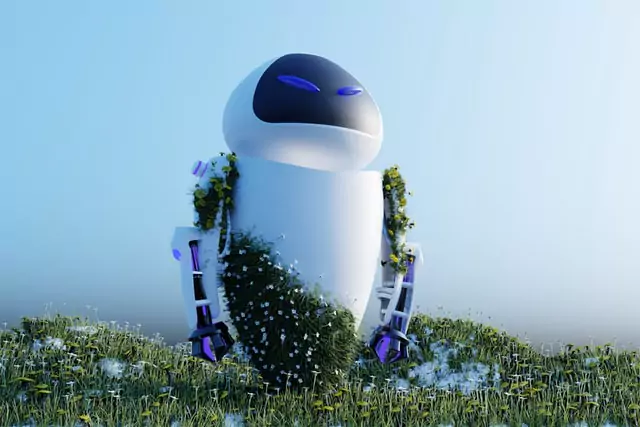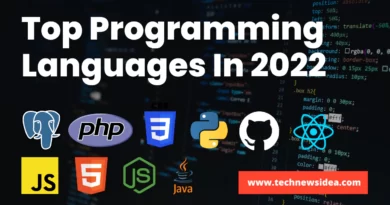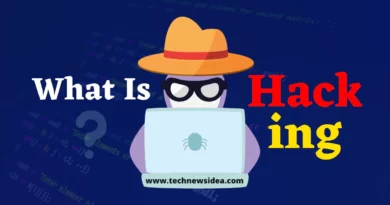Top 9 Invention of Advance Technology
The most important factor separating advanced economies from prehistoric ones is technology. Technology boosts both productive and allocative efficiency for all enterprises since it lowers production costs and offers new products. Technology development is uncertain, though. Nobody can predict what will be found or when or where. In fact, simply gauging the pace of new technologies is exceedingly challenging.
Technology is frequently left out of economic models as a result, which simplifies their study. The short run is seen in economics as a time frame in which businesses can alter variable inputs but not fixed costs. The long run is thought to be a long enough time frame for businesses to alter even fixed costs. Some economists attempt to adopt a very long-term perspective that accounts for technological progress, but it is exceedingly challenging to create such an analysis, especially with the aid of statistics. Even though it is referred to as a very long-term perspective, the time horizon may actually be brief, depending on how quickly technology is evolving in a given business.
Top 9 most advanced life technology:
- Artificial Intelligence and Machine Learning
- Robotic Process Automation (RPA)
- Edge Computing
- Quantum Computing
- Virtual Reality and Augmented Reality
- Blockchain
- Internet of Things (IoT)
- 5G
- Cyber Security
1. Artificial Intelligence and Machine Learning
Artificial Intelligence:
The replication of human intelligence functions by machines, particularly computer systems, is known as artificial intelligence. Expert systems, natural language processing, speech recognition, and machine vision are some examples of specific AI applications.
How does AI work?
Vendors have been rushing to showcase how their goods and services use AI as the hoopla surrounding AI has grown. Frequently, what they mean by AI is just one element of AI, like machine learning. For the creation and training of machine learning algorithms, AI requires a foundation of specialized hardware and software. There is no one programming language that is exclusively associated with AI, but a handful are, including Python, R, and Java.
A vast volume of labeled training data is typically ingested by AI systems, which then examine the data for correlations and patterns before employing these patterns to forecast future states. In this way, an image recognition program or chatbot that is fed instances of text dialogues might learn to make lifelike exchanges with people.
Three cognitive abilities—learning, reasoning, and self-correction—are the main topics of AI programming.
Processes for learning: This area of AI programming is concerned with gathering data and formulating the rules that will enable the data to be transformed into useful knowledge. The guidelines, also known as algorithms, give computing equipment detailed instructions on how to carry out a certain activity.
Machine Learning:
A subfield of artificial intelligence (AI) and computer science called machine learning focuses on using data and algorithms to simulate how humans learn, gradually increasing the accuracy of the system.
IBM has a long history with artificial intelligence. One of its own, Arthur Samuel, is credited with creating the term “machine learning” with his research on the game of checkers (PDF, 481 KB) (link lives outside IBM). In 1962, Robert Nealey, a self-described checkers master, competed against an IBM 7094 computer, but he was defeated. This achievement seems insignificant in light of what is now possible, but it is regarded as a significant turning point for artificial intelligence.
2. Robotic Process Automation (RPA)
Software called robotic process automation (RPA) makes it simple to create, use, and manage software robots that mimic how people interact with computers and software. Software robots are capable of performing a wide range of predefined tasks, including understanding what is on a screen, making the appropriate keystrokes, navigating systems, and extracting and identifying data. However, without the need to stand up and stretch or take a coffee break, software robots can complete the task faster and more reliably than humans.
What are RPA’s business advantages?
Workflows are streamlined through robotic process automation, which helps businesses become more profitable, adaptable, and responsive. By reducing menial duties from their workdays, it also boosts employee satisfaction, engagement, and productivity.
RPA can be quickly installed and is non-intrusive, which speeds up digital transformation. It’s also perfect for automating processes using antiquated systems that lack virtual desktop infrastructures (VDI), database access, or APIs.
3. Edge Computing
All About Edge Computing.
Edge computing is a promising information technology (IT) design in which client data is processed as near to the original source as is practical at the network’s edge.
The lifeblood of contemporary business is data, which offers invaluable business insight and supports real-time control over crucial corporate operations. The quantity of data that can be routinely acquired from sensors and IoT devices working in real time from remote places and hostile operating environments is enormous, and it is available to organizations today practically anywhere in the world.
In its most basic form, edge computing involves relocating some storage and computing capacity away from the main data center and toward the actual data source. Instead of sending unprocessed data to a centralized data center for analysis and processing, that work is now done where the data is really generated, whether that be on the floor of a factory, in a retail establishment, a large utility, or all throughout a smart city. The only output of the computer work at the edge that is delivered back to the primary data center for analysis and other human interactions are real-time business insight, equipment repair projections, or other actionable results.
4. Quantum Computing
What is Quantum Computing?
A fast developing technology called quantum computing uses the principles of quantum physics to solve issues that are too complicated for conventional computers.
A technology that scientists had only just begun to envisage thirty years ago is now made accessible to thousands of developers thanks to IBM Quantum. Every so often, our engineers release superconducting quantum processors that are ever-more potent, progressing toward the speed and capacity of quantum computing required to revolutionize the world.
These devices differ significantly from the traditional computers that have been in use for more than 50 years. Here is an introduction to this revolutionary technology.
5. Virtual Reality and Augmented Reality
Both augmented reality and virtual reality use simulations of real-world environments to either enhance or completely replace them.
- Using the camera on a smartphone, augmented reality (AR) typically enhances your surroundings by adding digital features to a live view.
- Virtual reality (VR) is an entirely immersive experience that substitutes a virtual environment for the actual world.
In augmented reality, a virtual environment is created to cohabit with the real world in order to provide users with more information about the real world without them having to conduct a search. For instance, when a smartphone is pointed at a piece of malfunctioning equipment, industrial AR apps might instantly provide troubleshooting information.
Virtual reality is a comprehensive environmental simulation that completely replaces the user’s real world with a virtual one. These virtual worlds are wholly artificial, hence they are frequently created to be larger than life. For instance, a user of VR could fight in a virtual boxing ring beside a cartoon version of Mike Tyson.
6. Blockchain
How Do Blockchains Work?
A blockchain is a shared distributed database or ledger between computer network nodes. A blockchain serves as an electronic database for storing data in digital form. The most well-known use of blockchain technology is for preserving a safe and distributed record of transactions in cryptocurrency systems like Bitcoin. The innovation of a blockchain is that it fosters confidence without the necessity for a reliable third party by ensuring the integrity and safety of a record of data.
The way the data is organized in a blockchain differs significantly from how it is typically organized. In a blockchain, data is gathered in groups called blocks that each include sets of data. Blocks have specific storage capabilities, and when filled, they are sealed and connected to the block that came before them to create the data chain known as the blockchain. Every additional piece of information that comes after that newly added block is combined into a brand-new block, which is then added to the chain once it is full.
Read this article to become a highly paid Blockchain Developer👇.

7. Internet of Things (IoT)
What is the internet of things (IoT)?
The network of physical items, or “things,” that are implanted with sensors, software, and other technologies for the purpose of communicating and exchanging data with other devices and systems through the internet is referred to as the Internet of Things (IoT). These gadgets include anything from common domestic items to high-tech industrial gear. Today, there are more than 7 billion connected IoT devices, and according to analysts, there will be 10 billion by 2020 and 22 billion by 2025.
What makes the Internet of Things (IoT) so crucial?
IoT has emerged in recent years as one of the most significant 21st-century technologies. Continuous communication between people, processes, and things is now possible thanks to the ability to connect commonplace items—such as household appliances, automobiles, thermostats, and baby monitors—to the internet via embedded systems.
Low-cost computers, the cloud, big data, analysis, and mobile technologies enable the sharing and collection of data by physical objects with a minimum of human intervention. Digital systems can record, monitor, and modify every interaction between connected entities in today’s hyperconnected environment. The physical and digital worlds collide, but they work together.
8. 5G
What is 5G?
The fifth generation of mobile networks, or 5G. Following 1G, 2G, 3G, and 4G networks, it is a new international wireless standard. In order to connect practically everyone and everything together, including machines, objects, and gadgets, 5G enables a new type of network.
The goal of 5G wireless technology is to provide more users with faster multi-Gbps peak data rates, extremely low latency, enhanced reliability, vast network capacity, and a more consistent user experience. New user experiences are enabled by increased performance and efficiency, which also connects new industries.
9. Cyber Security
What is Cyber Security?
The technique of protecting networks, computers, servers, mobile devices, communications devices, and data from hostile intrusions is known as cyber security. It is often referred to as electronic information security or information technology security. The phrase can be broken down into a few basic categories and is used in a wide range of applications, including business and mobile computing.
Types of cyber threats
Three types of attacks are fended off by cyber security:
- Cybercrime comprises lone actors or organizations that target systems for harm or financial advantage.
- Information gathering for political purposes is a common component of cyberattacks.
- Cyberterrorism aims to compromise electronic systems to elicit fear or panic.
Want to know more about ethical hacking?
Your Queries:




